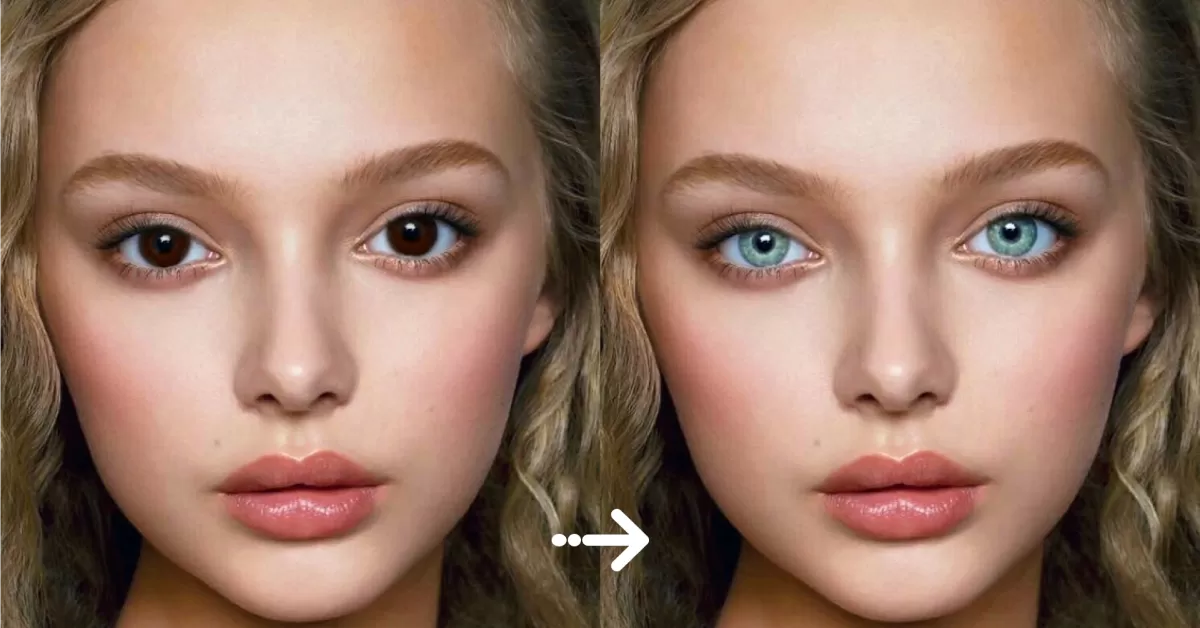
14questions about eye color change
Eye color is often a genetic trait that surprises parents more as the child grows. Will the baby's eyes be black, brown, blue, gray, green, hazel, or a mixture of colors? What a child looks like depends on the genetic material that each parent shares with the child. But parents' genes can mix and match in many different ways. The effects of each parent remain unknown until the birth of the child.
How does eye color arise?
The colored part of the eye is called the iris, which contains the pigment that determines eye color. Human eye color originates from three genes, two of which are well understood. These genes are responsible for the most common colors; Green, brown and blue. Other colors, such as gray, hazel, and various blends, are not fully understood or explainable today. Meanwhile, brown eye color was 'dominant,' and blue eye color was 'recessive.' But modern science has proven that eye color is not a simple matter. Eye color is not just a mixture of the colors of the parent's eyes, as is the case with mixing colors. Each parent carries two pairs of genes on each chromosome, and there are multiple possibilities for how this genetic information might be expressed in terms of eye color. Early in life, eye color can change. Most children of the Caucasian race are born with blue eyes, which can darken in the first three years of life. Eyes darken if melanin is present. The brown pigment is usually not present at birth but develops with age. Babies can have very different eye colors than their parents. But if both parents have brown eyes, then most likely, their children will also have brown eyes. Dark colors tend to be dominant, So brown tends to prevail over the green, and green tends to predominate over blue. However, if one parent has brown eyes and the other has blue eyes, this does not automatically result in a child with brown eyes. Some babies are born with mismatched iris. This health condition (known as heterochromia) is caused by faulty developmental pigment transfer, local injury either in utero or shortly after birth, or a benign genetic disorder. Inflammation can be from other causes, iris petechiae (diffuse nevus) and Horner's syndrome.
Frequently asked questions about eye color change:
Why does the pupil not move after the operation?
The original pupil continues to function normally but is not visible because it is obscured by the pseudo-fixed pupil caused by corneal pigmentation.
Why does the color not cover the iris to the center of the eye?
The cornea is a transparent dome in front of the eye that allows light to enter the retina. Eyesight is not affected by making the edges of the cornea more or less intense by pigment. On the other hand, excessive coverage of the center of the cornea would significantly limit the field of view. On the other hand, it may become more complicated for the ophthalmologist to examine the back of the eye properly, and some operations (such as glaucoma removal surgery) may become more complex.
Can surgery be performed on dark eyes?
Yes. Aesthetically, the result is better on dark eyes (4th and 5th level) than on light eyes.
read more :
Is the process of changing eye color painful?
The operation is performed under local anesthesia with eye drops. The operation is not painful. It is possible to feel tingling or dry eyes in the following days or weeks, but these typical symptoms quickly disappear. Of course, it all depends on the type of operation and the specialist doctor.
Will there be pain after the operation?
In general, there will be slight pain after the operation, but between 20 and 30% of patients will feel significant pain within the 24 hours following the operation. It will then be necessary to take painkillers.
Can I recover my eyesight immediately after the operation?
The vision is usually blurred for a few hours after the operation, but it is enough to walk and take a taxi. Visibility will improve the next morning significantly. It becomes routine after a few days.
Is it possible to only perform the operation on one eye or dye the eyes in two different colors?
For ethical and aesthetic reasons, we only perform operations on both eyes and in the same color.
Is it possible to mix two colors (or more than two colors)?
Yes, it is possible. But the result will not be a mixture of colors, but rather a solid color resulting from mixing colors. It is also necessary to consider the additional 1,500 euros in fees for each bottle of additional color.
Is it possible to remove the color?
It is possible to remove about 20 to 30% of the color. A little pigment will remain mainly near the limbic ring and the pupil.
Is it possible to make the color more or less intense?
Yes, it is possible to control the dye's intensity (or concentration). Lower density gives a natural look, but if it is darker, it becomes less noticeable. Strong density will give a more visible but less natural look.
What is the difference between intensity (focus) and tint?
The first is the opposite of the second. The more intense the color you apply, the higher the intensity and the lower the dilution.
What are the components of the dye used to change the color?
The pigment used by ceritamed is made in France. The dispersion consists mainly of the natural analog of the plant origin of propylene glycol and pH modifiers (lactic acid or sodium hydroxide, depending on the condition).
- Dyes are made from a mixture of:
- Iron oxide (red, yellow, black) and titanium for brown colors,
- chromium oxides, ultramarine and titanium dioxide for green colors,
- Ultramarine copper phthalocyanine and titanium dioxide for blue colors,
- Iron oxide black and carbon black.
Who can operate on an eye that has had a BrightOcular implant?
Removing these implants as soon as possible represents a significant risk to vision. Then, if three months pass without affecting the cornea and it remains healthy (especially if the number of endothelial cells is more than 1500/mm2), a Norse operation is possible.
Is it possible to live normally after the operation?
Yes, after three days, you can resume your normal activities and sports and beautify your skin again...
